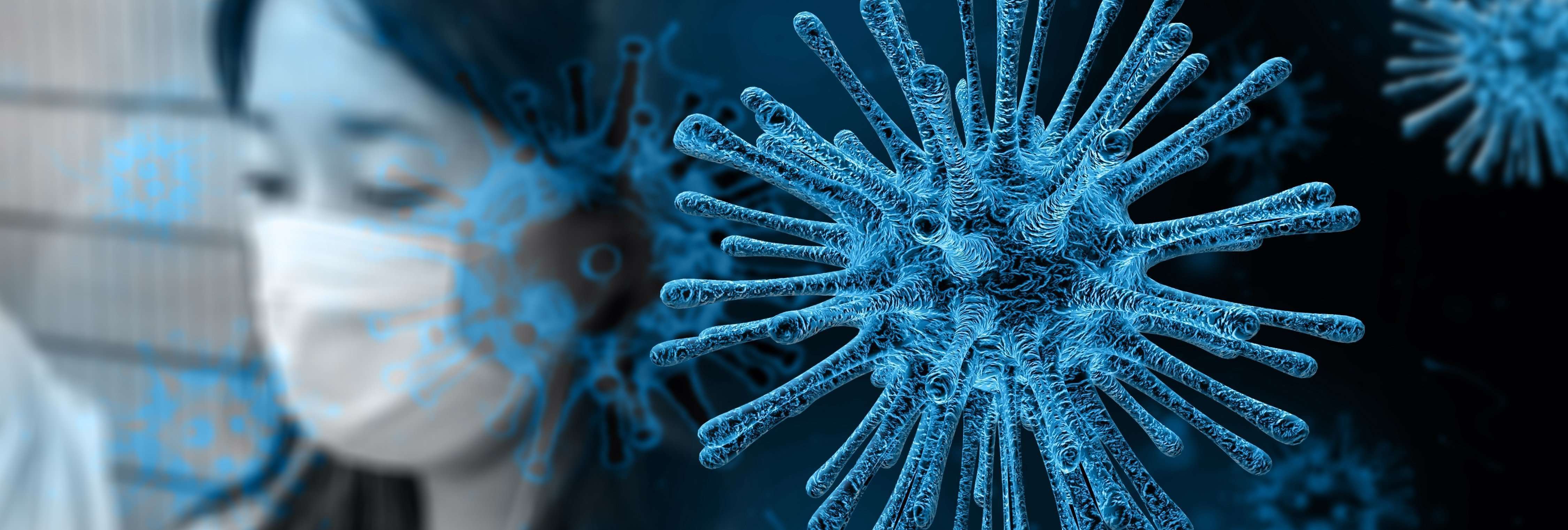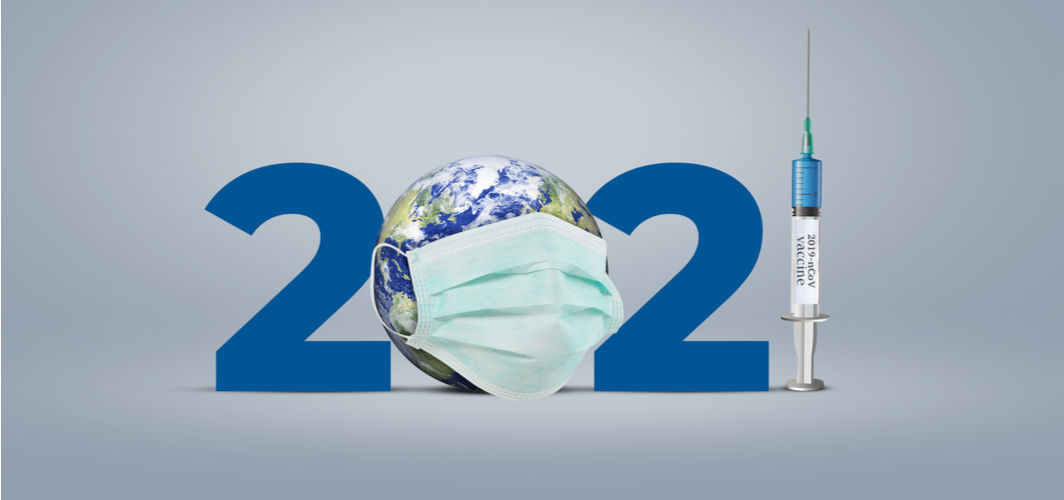Coronavirus Updates
New Lancet Study: COVID-19 Spreads Predominantly Through the Air
5 min read
By Apollo 24/7, Published on - 20 April 2021, Updated on - 18 October 2022
Share this article
0
6 likes

Since the beginning of the COVID-19 pandemic, scientists have been trying to determine the primary route of virus transmission. Over time, multiple studies investigating the primary route of transmission have yielded mixed results. While some studies have observed that SARS-CoV-2, the virus that causes COVID-19, spreads primarily through the air; others have found inconclusive evidence in this regard.
Nevertheless, a new assessment published in the journal The Lancet, on 15th April 2021, seems to provide consistent and robust scientific evidence to prove that the SARS-CoV-2 virus is also transmitted through the air. The analysis by six experts from the UK, the US, and Canada argue that current pandemic control measures focus on large-droplet-borne transmission. As a result, these measures are inadequate to tackle the infections caused by airborne transmission.
10 scientific reasons to prove airborne transmission of SARS-CoV-2
The assessment published in The Lancet has shared the following 10 reasons to prove that SARS-CoV-2 spreads primarily through airborne mode:
- Super-spreading events have contributed significantly to SARS-CoV-2 transmission. According to research authors, such events could be the primary drivers of transmission. They have noted that detailed scrutiny of human behaviour and other factors during such events have shown patterns “consistent with the airborne spread of SARS-CoV-2 that cannot be adequately explained by droplets or fomites”.
- Researchers have documented scientific evidence of long-range transmission of SARS-CoV-2 between individuals in adjacent rooms in quarantine accommodations, even when they were not in each other’s presence.
- Asymptomatic or pre-symptomatic transmission from people who do not exhibit usual symptoms such as coughing or sneezing account for at least a third, and perhaps up to 59%, of all SARS-CoV-2 transmission globally. Researchers believe that this is one of the major ways through which COVID-19 has spread throughout the world, pointing towards the airborne route of transmission.
- The risk of SARS-CoV-2 transmission is higher indoors than outdoors. The risk can be reduced significantly through indoor ventilation. According to researchers, these observations indicate the predominance of airborne mode of SARS-CoV-2 transmission.
- Researchers have gathered and documented evidence of new infections in healthcare settings with strict contact-and-droplet precautions, including the use of personal protective equipment (PPE) kits, to protect against droplets but not aerosol exposure.
- Multiple studies have detected viable SARS-CoV-2 in the air. There is enough evidence to suggest that SARS-CoV-2 can stay infectious in the air for up to 3 hours. One of the studies has also identified viable SARS-CoV-2 in the air samples of rooms of COVID-19 patients in the absence of aerosol-generating procedures. Another study detected the virus in the air samples of an infected person’s car.
- SARS-CoV-2 has been detected in air filters and building ducts in hospitals with COVID-19 patients. Researchers state that such locations can be reached only by aerosols.
- Studies involving infected caged animals that were connected to separately caged uninfected animals via an air duct have shown transmission of SARS-CoV-2 that can be adequately explained only by aerosols.
- Non-availability of strong or consistent evidence to counter the hypothesis of airborne SARS-CoV-2 transmission. It is true that some people have evaded SARS-CoV-2 infection while sharing air with infected people; however, this situation could be explained by certain possible factors, including variation in the amount of viral shedding between infectious individuals and different environmental conditions.
- Availability of limited evidence to support other dominant routes of SARS-CoV-2 transmission—i.e. respiratory droplet or fomite.
How to tackle airborne transmission of SARS-CoV-2?
Health experts suggest that current pandemic control measures should be updated to address the challenges posed by the ever-evolving nature of the SARS-CoV-2 virus. Given the predominance of airborne transmission of COVID-19, they have suggested the following measures to reduce the risk of infection:
- Closed spaces with poor air circulation can facilitate the accumulation of the SARS-CoV-2 virus in the air for a significantly longer period of time. Therefore, people should be advised to ensure proper and effective indoor ventilation at homes and workplaces. Allowing the free circulation of outdoor air by opening windows will help disperse the air-borne viral droplets and reduce the risk of virus concentration.
- People should be advised to practice double masking i.e., wearing two face masks for greater protection against COVID-19. According to a study published in the journal JAMA Internal Medicine, double masking is nearly two times more effective at filtering out SARS-CoV-2-sized particles.
- People should be advised to avoid large indoor gatherings. They should also be asked to limit the amount of time they spend indoors. This will help limit their exposure to airborne SARS-CoV-2 virus in indoor settings.
Conclusion
Scientists have been evaluating the role of airborne transmission of SARS-CoV-2 in causing infections since last year. Till recently, there was limited scientific evidence to prove the predominant role of airborne SARS-CoV-2 transmission. However, a new analysis published in The Lancet seems to have provided strong evidence to prove that SARS-CoV-2 spreads primarily through the air. Now, experts are suggesting making suitable changes to the pandemic control measures and general COVID-19 appropriate behaviour. According to them, the new measures should focus more on double masking, indoor air ventilation, indoor crowd control, and the amount of time people spend indoors. Going forward, these measures will play a major role in limiting the spread of COVID-19.
If you have any questions on the Coronavirus, you can speak to our experts through an online doctor consultation.
Also, explore our range of Coronavirus Care and Coronavirus Protection products.
Coronavirus Updates
Leave Comment
Recommended for you

Coronavirus Updates
Can a Person Get Infected by Coronavirus Twice?
Reinfection with Coronavirus is possible if people do not take precautionary measures such as wearing masks, getting vaccinated, etc.

Coronavirus Updates
World Thyroid Day 2021: The link between thyroid disease and COVID-19
Some studies indicate that people with thyroid disease may be at increased risk of severe COVID-19 outcomes. However, more research is needed to establish this.

Coronavirus Updates
Can the Antiviral Medicine Molnupiravir Stop COVID-19 Transmission?
Studies conducted by researchers have revealed that a new antiviral medicine known as Molnupiravir can halt the transmission of the virus causing COVID-19.
Subscribe
Sign up for our free Health Library Daily Newsletter
Get doctor-approved health tips, news, and more.
Visual Stories

Covid-19 Updates: Are Things Getting Brighter?
Tap to continue exploring
Recommended for you

Coronavirus Updates
Can a Person Get Infected by Coronavirus Twice?
Reinfection with Coronavirus is possible if people do not take precautionary measures such as wearing masks, getting vaccinated, etc.

Coronavirus Updates
World Thyroid Day 2021: The link between thyroid disease and COVID-19
Some studies indicate that people with thyroid disease may be at increased risk of severe COVID-19 outcomes. However, more research is needed to establish this.

Coronavirus Updates
Can the Antiviral Medicine Molnupiravir Stop COVID-19 Transmission?
Studies conducted by researchers have revealed that a new antiviral medicine known as Molnupiravir can halt the transmission of the virus causing COVID-19.